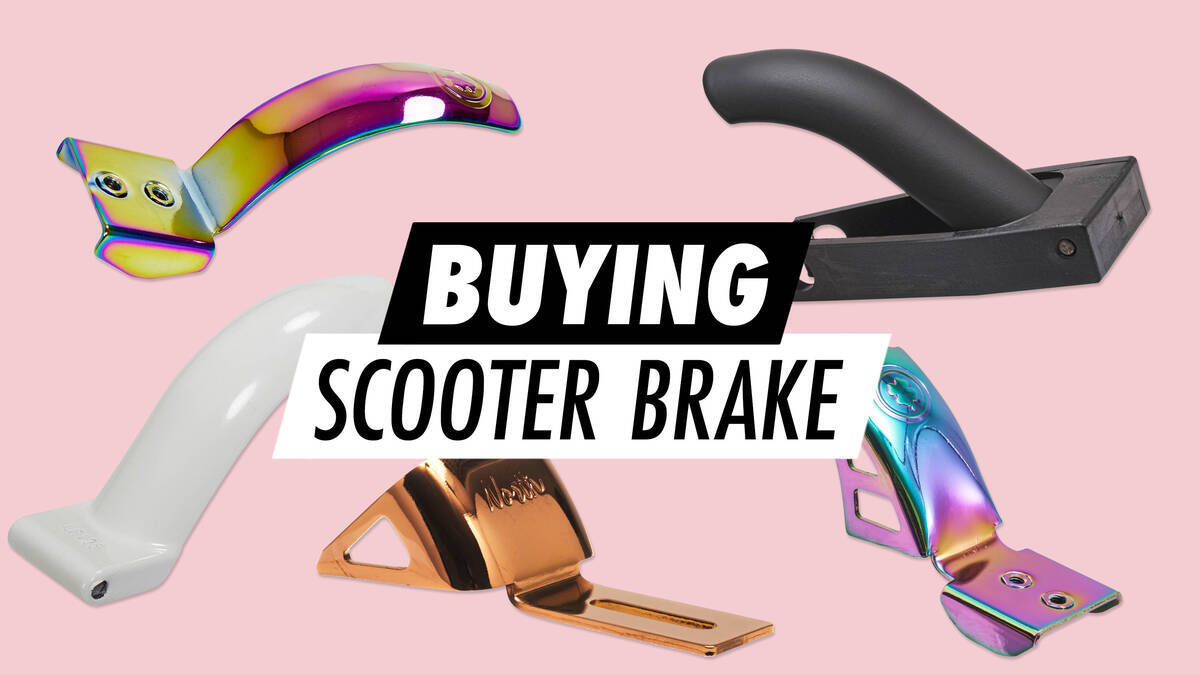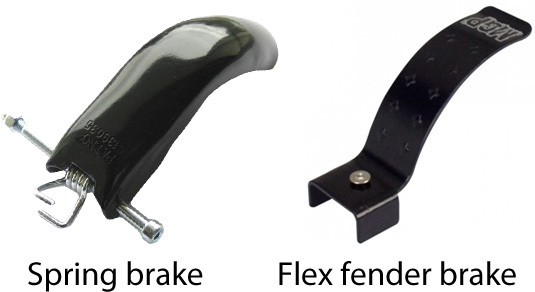Purchasing a Scooter Brake

A brake is engineered to decelerate or prevent a mishap.
Apply gentle pressure on the brake whilst shifting your weight backwards on the scooter for maximum braking efficiency.
Avoid obstructing your wheel/brake on the scooter, as this will lead to poor braking effectiveness and cause flatspots on your wheel, regardless of the wheel's make or quality.
The diagram below illustrates the two most frequently used brakes.

- A spring brake is affixed to the attached bolt, which in turn is secured to the deck. A spring on the bolt ensures the brake remains elevated and clear from the deck.
- A flex fender brake consists of a long metal plate pre-shaped to fit around the wheel. Typically, it is secured to the deck with one or more screws. Pushing down on the metal plate will cause it to bend entirely towards the wheel.
Both types of brakes are designed for 100 mm and 110 mm wheels, usually detailed in the product specifications.
Suggestions:
- Avoid obstructing your brake (to prevent flatspots, as a flatspot causes the wheel to jump).
- Spring brakes include more components and are often regarded as noisier than flex fender brakes.
- Flex fender brakes generally have a shorter lifespan due to their structure.
- Attaining an utterly silent brake over extended periods is not feasible.
- 110 mm wheels will not accommodate 100 mm brakes.
- 100 mm wheels will be compatible and function with a 110 mm brake.
- Brakes do not universally fit all decks. (Consider using the same brand and type.)
- Flex fender brakes can fracture easily if a wheel is worn out, as the plate must travel a longer distance to reach it. Always replace your wheels before they are fully worn!
This video shows how to mount a flex fender brake on your deck:
Return to Assembling a Custom Trick Scooter
Return to Stunt Scooters Explained
